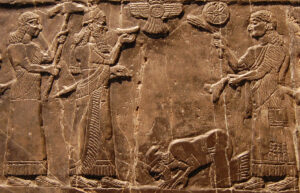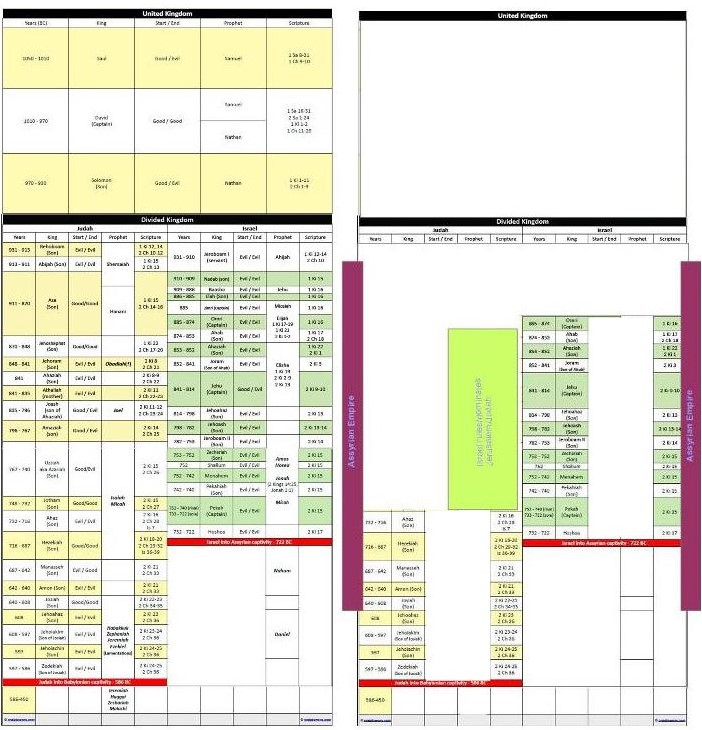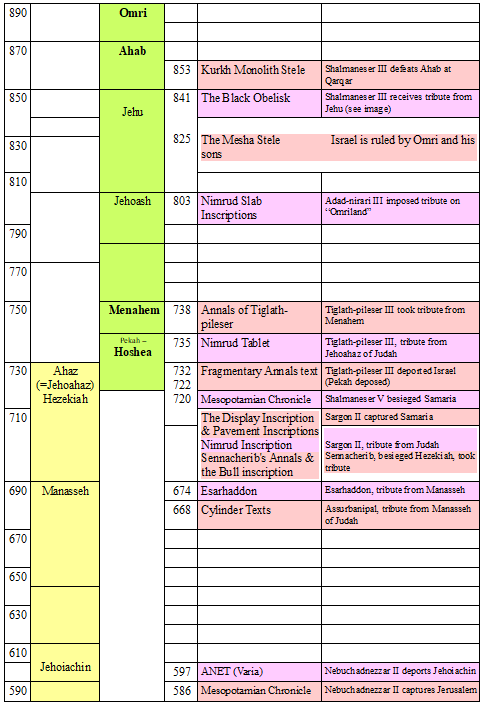 This post is based on Russell Gmirkin’s chapter, “‘Solomon’ (Shalmaneser III) and the Emergence of Judah as an Independent Kingdom”, in the Thomas L. Thompson festschrift, Biblical Narratives, Archaeology and Historicity. All posts addressing the same volume are archived here.
This post is based on Russell Gmirkin’s chapter, “‘Solomon’ (Shalmaneser III) and the Emergence of Judah as an Independent Kingdom”, in the Thomas L. Thompson festschrift, Biblical Narratives, Archaeology and Historicity. All posts addressing the same volume are archived here.
Russel Gmirkin’s conclusions (p. 77):
• That the area later known as the kingdom of Judah was under direct rule from Samaria from c. 875 to c. 735 BCE.
• That Yahweh worship was also centered at Samaria during this early period and only appeared at Jerusalem as a result of Samarian regional influences.
• That Judah only emerged as an independent political entity in the time of Tiglath-pileser III under Jehoahaz of Judah in c. 735 BCE.
• That the Acts of Solomon originated in the Neo-Assyrian province of Samaria to celebrate Shalmaneser III as legendary conqueror and founder of an empire south of the Euphrates.
• That old local monumental architecture that the Acts of Solomon attributed to Shalmaneser III, including Jerusalem’s temple, is best understood as reflecting Omride building activities c. 875-850 BCE.
A typical chart illustrating the Old Testament chronology of the kingdoms of Israel and Judah is Jonathan Petersen’s on the BibleGateway Blog. I have copied that chart complete (left). If we use contemporary archaeological sources to determine what the kingdoms of Israel and Judah looked like and make adjustments to that chart we end up with something like the following. The United Kingdom disappears entirely. The Kingdom of Judah only emerges after the Assyrians have hamstrung the Kingdom of Israel in the time of King Menahem in the 730s. Before then the area we think of as the kingdom of Judah had been dominated by the kingdom of Israel.
Russell Gmirkin does not use the above chart but he does seek to reconstruct the historical origins of the kingdom of Judah, its Temple and Yahweh worship by means of the contemporary archaeological sources and comes to much the same conclusion as illustrated on the right side of the above chart. In an effort to get a handle on the archaeological sources and their relation to what we read in the biblical texts I made up my own rough grid based on Gmirkin’s list of archaeological sources. Dates and scale are only approximate. Many of the sources are available online for those interested in that sort of detail.
The kingdom of Judah does not register a mark on the world scene until after the Samaria based kingdom of Israel has been weakened by Assyria and on the brink of final collapse. For earlier Vridar posts on this order of events see
- Jerusalem unearthed – archaeology and Jerusalem 1000 to 700 b.c.e.
- Jerusalem’s rise to power: 2 views (this post compares the views of Israel Finkelstein with those of Thomas L. Thompson)
For those interested in following up the archaeological testimony to the kingdoms of Israel and Judah as per the above chart . . .

Consult Luckenbill’s Ancient Records of Assyria and Babylonia Volumes 1 and 2 for
- the Kurkh Monolith Stele
- the Black Obelisk
- the Mesha Stele
- the Nimrud Slab Inscriptions (for Adad-nirari III)
- the Annals of Tiglath-pileser
- the Display, Pavement and Nimrud Inscriptions (for Sargon II)
- Sennacherib’s Annals & Bull inscription
- the Cylinder texts (for Ashurbanipal)
Consult Glassner’s Mesopotamian Chronicles (I was able to access this volume on Questia in July last year but cannot see them there now; hope you have better luck) for
- Shalmaneser V’s siege of Samaria
- Nebuchadnezzar II’s destruction of Jerusalem
And Pritchard’s Ancient Near Eastern Texts for
- Esarhaddon’s subjugation of king Manasseh of Judah
- Nebuchadnezzar II’s deportation of king Jehoiachin of Judah
Archaeological finds have demonstrated that Israel under Ahab extended its power from the Galilee through to the Red Sea. The map below is from Israel Finkelstein’s The Forgotten Kingdom : the Archaeology and History of Northern Israel (open access link). Read the concluding paragraphs of chapter 3 for Finkelstein’s discussion of evidence that Jerusalem at the time of Ahab was far from being a significant urban site. The map shows the main sites of Ahab’s building activities. Continue reading “Reconstructing the History of “Biblical” Israel and Judah”


